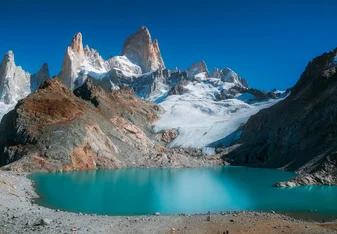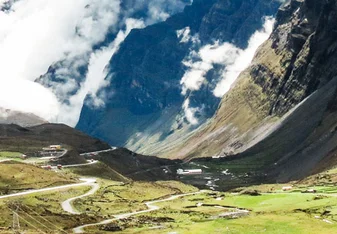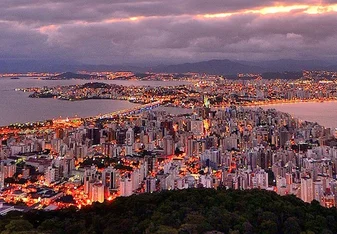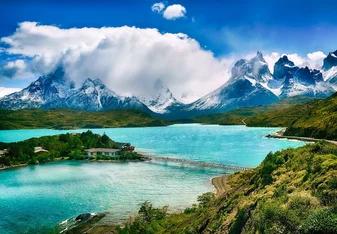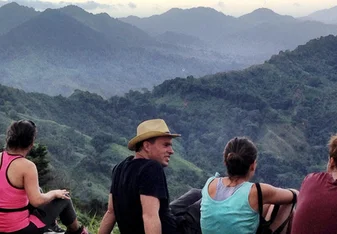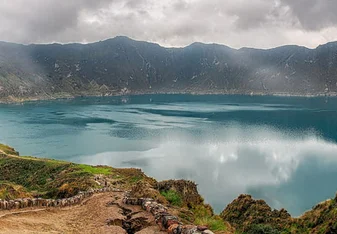Gap Year Programs in Peru
About
Machu Picchu may be the king of Peru's ancient sites, but it’s not the only gem in Peru's archaeological crown. Peru is home to a fine selection of fascinating ruins that lie scattered around the country. Beyond Peru’s mystical beauty, the country boasts unbeatable cuisine, rapidly making its mark on the global culinary map. Take your gap year in Peru and indulge in a wide variety of regional delights, including arguably the continent's finest ceviche (raw seafood in a lime marinade). Experience the country’s amazing coasts, highlands, and jungles. Imagine, in just one 14-hour bus ride. You can see both the desert coast, the chilly heights of the Andean range, and the vast Peruvian Amazon!
Program Types
Volunteering
Peru’s diverse landscape presents you with more mountains to climb and cities to explore than you’ll know what to do with. Filled with volunteer opportunities, Peru is the perfect country to take your gap year. Many volunteer programs focus on local communities, trying to improve the quality of life for residents of the shantytowns developed in Lima. There’s also an array of other volunteer options, including caregiving, healthcare, and English teaching. With its enchanting contemporary culture and unmatched scenery, Peru is simply a must-see for any gapper. Many programs will give you the structure you need along with the freedom to immerse yourself in a vibrant, captivating locale. So what are you waiting for?
Adventure Travel
Peru is a land of many options. Peru is home to three geographic regions of coast, highland, and jungle. Even during a short visit, Peru's diversity is more than evident. Peru's distinct environmental regions provide excellent trekking options for both experienced hikers and casual trekkers alike. There are plenty of trails to choose from, mountains to climb, caves to view, and rivers float across. In Peru, you will have the unique of protecting a sacred environment while learning about a new culture. There are few places in the world where you can walk through ancient ruins and cross a majestic river on the same day.
Internships
Get an internship in Peru. Many internships last from 1-3 months, but some go for an entire year. Interns often stay with a host family for their stay, where they can learn traditional customs and practice their speaking skills. Interns have the opportunity to gain valuable professional experience while exploring Peru, one of the most popular Latin American countries.
While Lima is considered Peru's urban center and is home to over 8 million people. There are internships across the whole country. Most internships in Peru focus on serving a local community and aim to help relieve issues such as lack of healthcare and access to public education. As an intern in Peru, you will have the opportunity to use your skills and experience to assist local communities while gaining important experience that will help you stand out in this competitive job market.
Planning Your Trip
Cost of Living in Peru
Since 1 PEN is only equivalent to .38 U.S. Dollars, the cost of living in Peru is quite cheap compared to the U.S. and Europe. Compared to other Latin American countries, Peru has an average cost of living. Peru is cheaper than Brazil, Ecuador, Colombia, or Chile, but more expensive than Bolivia or Paraguay. Lima has the highest living costs in Peru, together with the city of Cusco. In general, services, food, transport, lodging, and clothes are cheap. But technical and electronic products, as well as imported food, can be expensive. Food costs vary according to the place where you buy. But, public transit and rent are far cheaper in Peru than it is in the U.S. or Europe. An all-day bus ticket is only 40 cents, and monthly rent is usually below $300!
Culture and Etiquette in Peru
The official language is Spanish, so many Peruvian customs and traditions are influenced by European-descended cultures. But over the years, these European traditions have blended with the indigenous Amerindian traditions creating a distinct Peruvian culture. While much of Peruvian etiquette is similar to that of other Latin American countries, a few are unique to Peruvian and Amerindian cultures.
The Peruvian year is filled with colorful festivals. For example, during Semana Santa, the week leading up to Easter Sunday, religious processions block the streets with a fascinating blend of colonial and indigenous traditions. Cusco celebrates the great Inca festival of Inti Raymi on June 24, making it a popular time to visit Peru and Machu Picchu. In the jungle, the same day marks the Festival of San Juan, a day of wine and relaxation along the riverbanks followed by an epic night of dancing. Finally, don't forget Peru's Independence Day on July 28, when raucous parties and endless fireworks ensure a long and lively night.
When meeting Peruvians, it is polite to have learned some simple Spanish phrases. This will enable you to make a good first impression. And don’t forget to smile! Peruvians tend to be formal and conservative, especially around the Andes region. It is bad etiquette to stare or make continual eye contact. You should respect the modesty and reserved nature of many Amerindian communities. Adhering to similar behavior and modest dress codes would be seen as an important sign of respect.
Health & Safety
In Peru there is a very high risk of contracting bacterial diseases and viruses Including hepatitis A, typhoid fever, dengue fever, malaria, and yellow fever. Make sure to get vaccinated before arrival. Drink only bottled water and carry health equipment with you as often as possible (especially on expeditions).
Frequently Asked Questions
-
What are the benefits of a gap year in Peru?
There are many opportunities to volunteer and support the local communities in Peru, providing a way of immersing yourself culturally and develop your perspective. Peru has emerged onto the world stage for its cuisine, making it an excellent destination for foodies.
-
How much does it cost to live in Peru for a year?
Peru is one of the most affordable countries to live in in South America. With the low cost of living and opportunities for work exchanges, Peru is an excellent destination for gappers on a tight budget yet still looking for a meaningful gap experience to expand their perspective.
-
What kind of visa do I need for a gap year in Peru?
Peru allows citizens with valid passports from most countries in the Americas and Western Europe to enter without a tourist visa and stay for up to 183 days. For those looking to stay longer, you will need to apply for a relevant visa. To learn more, visit Peru.travel.
-
What are the most popular types of gap year programs in Peru?
Gap year programs in Peru often focus on experiential education, volunteering, and immersion into Latin American culture. Adventurous itineraries like backpacking Machu Picchu are very popular among travelers visiting Peru. Many of the volunteering opportunities related to providing healthcare, teaching English, and improving the quality of life within the local communities.


















